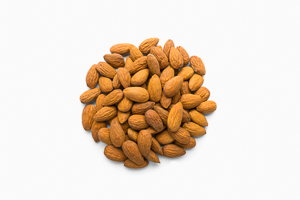Non-Milk Sources of Calcium
Overview

Dairy products like milk, yogurt, and cheese provide a lot of calcium. But there are other foods that have calcium. These foods include kale, broccoli, and bok choy. You can also get calcium by eating canned sardines and canned salmon with the bones. And calcium is sometimes added to tofu, plant-based beverages (like soy or almond beverages), and fruit juice.
Some greens, such as spinach and Swiss chard, are not good sources. They have a lot of calcium, but very little of it is available to the body. These foods contain binders that prevent the calcium from being absorbed.
Some people who avoid dairy foods take supplements to be sure they get enough calcium and vitamin D.
Non-dairy foods with calcium
The following are some foods that can provide calcium for people who don't include dairy in their diets.footnote 1
Non-milk calcium sourcesFood | Serving size | Calcium (in milligrams) |
|---|
Tofu (with added calcium)
| 150 g (5 oz) | 525 mg |
Calcium-fortified soy beverage | 1 cup (250 mL) | 319 mg |
Canned salmon with bones | 75 g (3 oz) | 286 mg |
Calcium-fortified orange juice | 1/2 cup (125 mL) | 155 mg |
Almonds | 1/4 cup (60 mL) | 97 mg |
Bok choy, cooked | 1/2 cup (125 mL) | 84 mg |
Kale, cooked
| 1/2 cup (125 mL) | 49 mg |
Broccoli, cooked | 1/2 cup (125 mL) | 33 mg |
References
Citations
- Health Canada (2008). Nutrient value of some common foods. Ottawa: Health Canada. Also available online: http://www.hc-sc.gc.ca/fn-an/nutrition/fiche-nutri-data/nutrient_value-valeurs_nutritives-eng.php.
Credits
Adaptation Date: 2/21/2023
Adapted By: Alberta Health Services
Adaptation Reviewed By: Alberta Health Services
Adaptation Date: 2/21/2023
Adapted By: Alberta Health Services
Adaptation Reviewed By: Alberta Health Services
Health Canada (2008). Nutrient value of some common foods. Ottawa: Health Canada. Also available online: http://www.hc-sc.gc.ca/fn-an/nutrition/fiche-nutri-data/nutrient_value-valeurs_nutritives-eng.php.
